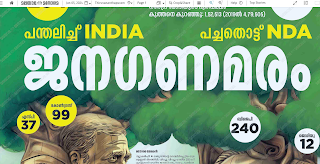Agile Development: Software development based on an iterative and incremental approach. Regular feedback and frequent changes effected to plans to develop a software. See Agile Manifesto for more.
API: Short for Application Programming Interface. According to Webopedia, An API is a set of routines, protocols, and tools for developing software products.
Application Server: A software (set up in a centralised location) used in intranet/internet environment to query databases or for business processing.
Batch Process: A process that runs a series of commands or processes.
Build: Generally, a pre-release version of a software program. There will be many builds that will be tested before the final product is shipped to the customer.
Burndown chart: In Agile software development, this chart tracks sprint progress so that project managers can decide which items must be removed from the sprint backlog and moved to the next sprint.
CSV File: Short for Comma Separated Value file, which is a file format used to exchange data between different applications.
Design Spec: A technical document that contains descriptions of the design of a particular product.
DITA: Short for Darwin Information Typing Architecture, an XML-based architecture for authoring, producing, and delivering technical information.
Eclispe: Eclipse is an open source and free development environment.
Exception: In Java, exception refers to an object that describes an error condition in the code.
Flat File: A text file or database that contains unrelated records.
Iteration: In Agile software development, a short period of time (varies from two weeks to a month) in which the development team develops a complete feature or functionality.
JDK: Short for Java Development Kit. A Java Development Kit (JDK) is an environment for creating Java applets and applications.
Run book: A reference document, generally used by system administrators, containing procedures to begin, stop, and supervise a system or network.
Single Sourcing: A documentation approach used to create multiple documents from a single content source or library.
Six Sigma: A data driven system to continuously build and improve quality into processes and products developed.
SOA: Short for Service Oriented Architecture.
SOP: Short for standard operating procedures. A document that contains the standrad operating procedures to run a system efficiently.
Table: In a relational database, a Table is a set of columns that contain data.
Test Case: A document that lists inputs, actions, events and the results expected from a working software build. This is used to test the functionality or feature developed by the software development team.
Test Plan: A plan that details the approach to test a software as a whole, and not the parts.
Topic-based Authoring: A content creation approach that creates stand-alone content, which can be easily reused in any context, managed, and assembled.
Use Case: A document that describes how a type of user uses a sofware to achieve a particular goal or goals.
Software Design Document: A document describing a software or an overview of the architecture of the software. There are two kinds of design documents: High Level Design Document (HLDD) and Low Level Design Document (LLDD).
XML: Short for Extensible Markup Language, a markup language.
Subscribe to:
Post Comments (Atom)
Newspaper front pages - June 5
Some images of front pages of newspapers after votes were counted on June 4, 2024 after a ridiculously long parliament elections. Did the ...

-
Some images of front pages of newspapers after votes were counted on June 4, 2024 after a ridiculously long parliament elections. Did the ...
-
The following classification of newspaper headlines is based on my journalism notes. They are from the point of page layout. Flush Left -Hea...
-
Leaders who pick and quibble and snipe are people who fear that a Mojofied team might threaten their own petty power. If your environment is...

No comments:
Post a Comment